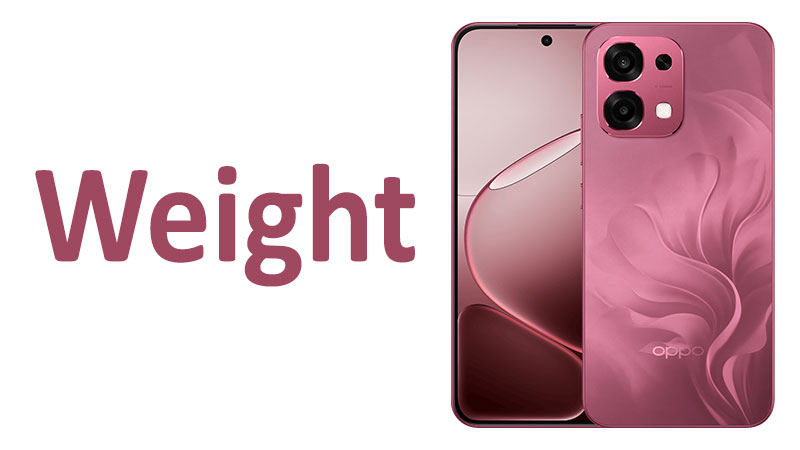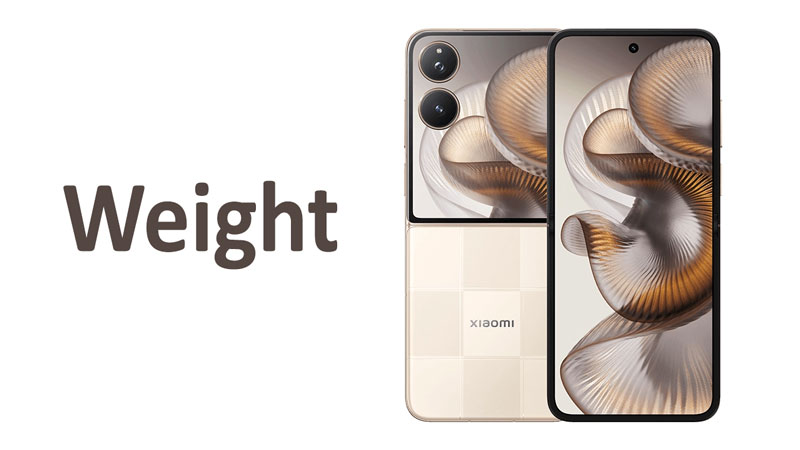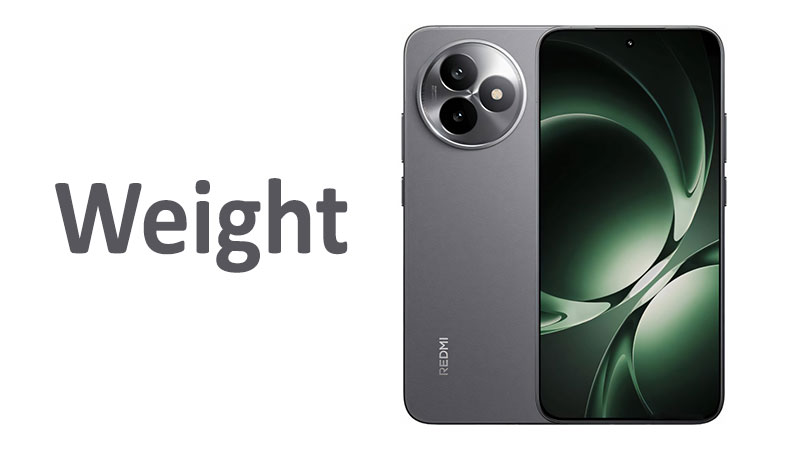The Oppo F31 weight is a fundamental specification for potential buyers. It significantly influences the phone’s daily handling and overall comfort. Smartphones designed for the mid-range market often prioritize slimness and lightness. The F31 is no exception to this industry standard. Its confirmed mass is 185 grams, which converts to 6.53 ounces. This weight places the device firmly in the category of lightweight, highly portable mobile phones. Understanding this specific mass is essential. It helps consumers evaluate the phone’s ergonomic performance accurately. This comprehensive article delves into every facet of the Oppo F31’s weight. We explore its design implications, compare it to market rivals, and analyze its impact on the user experience.
Technical Weight Analysis: 185 Grams and 6.53 Ounces
The exact mass of the Oppo F31 is a highly optimized measurement. The total weight stands at precisely 185 grams. This figure represents the complete device, ready for immediate use. It includes the chassis, display, internal battery, and all circuit boards. The specific number reflects Oppo’s commitment to achieving good balance. They balance necessary internal components against optimal ergonomic dimensions.
Understanding the 185 Gram Benchmark
The 185-gram figure is a psychological and practical benchmark. It sits comfortably below the 200-gram threshold. A phone below 200g is generally perceived as light. This lightness is especially noticeable after handling a heavier flagship device. The mass suggests that Oppo made strategic material choices. They likely utilized polycarbonate elements or a thin aluminum frame.
Furthermore, this weight suggests a balance in component size. For instance, the battery capacity is likely adequate but not excessively large. The camera module is likely streamlined. Overall, the 185g weight confirms the F31’s focus on user comfort. It prioritizes daily ease of use over the inclusion of bulky, high-density hardware.
Precise Gram-to-Ounce Conversion
The metric measurement of 185 grams translates to 6.53 ounces. This imperial weight is important for many international consumers. It allows them to quickly grasp the phone’s physical presence. One ounce is approximately 28.35 grams. Therefore, the 6.53 oz figure is an accurate translation of the device’s light mass.
The 6.53 ounces weight makes the phone feel very manageable. This light feel is highly beneficial for prolonged use sessions. Most users immediately recognize the difference this lightness makes. It offers a noticeable reduction in the physical burden of carrying the phone. The phone avoids the heavy, dragging sensation associated with larger devices.
The Significance of Sub-200g Weight
A phone that weighs less than 200 grams offers immediate advantages. It is significantly easier to carry in almost any pocket. It reduces the strain on clothing and minimizes discomfort when sitting. The Oppo F31 weight of 185g ensures these portability benefits. This lightweight design is a major selling point for the F31 model.
The light mass also contributes to a feeling of speed. Although purely subjective, a lighter phone often feels faster in the hand. Users associate lightness with quick, unhindered operation. Oppo aims to deliver a product that feels responsive both internally and externally. The 185-gram weight supports this perception of agility.
Design and Material Contributions to Weight
The final Oppo F31 weight of 185 grams is the direct result of engineering choices. The materials used in construction determine the phone’s mass. Oppo carefully selected components to meet this specific weight target. This section details how key elements influence the phone’s overall lightness.
The Role of the Battery Cell
The battery is typically the single heaviest component in any smartphone. The 185g weight suggests a battery capacity that is efficient but not enormous. The F31 likely uses a power cell in the 4,500mAh to 5,000mAh range. A cell in this capacity window balances weight and endurance well.
If Oppo had included a massive, high-density 6,000mAh battery, the weight would increase significantly. It would easily push the phone over the 200-gram mark. Therefore, the 185g weight confirms a sensible battery compromise. It provides sufficient power for all-day use while maintaining portability. The moderate battery size is a key factor in keeping the F31 light.
Chassis and Frame Material Choices
The structural materials are crucial for achieving lightness. The Oppo F31 likely features a polycarbonate back panel. It may also use a high-strength, thin aluminum alloy for the internal frame. Polycarbonate, or durable plastic, is significantly lighter than glass or ceramic.
Using these lighter materials allows the device to shed crucial grams. This is a common and effective strategy in the mid-range smartphone sector. While the polycarbonate back is lighter, it still offers adequate durability. This material choice is a major contributor to the attractive 185-gram mass. It represents a functional design choice for better portability.
Camera Module and Internal Components
The complexity of the camera system also affects the total weight. Flagship phones use bulky, complex camera modules with large sensors. The F31 likely utilizes a more streamlined, simpler camera array. These more compact components weigh considerably less.
The absence of heavy, motorized mechanisms is another factor. For example, the phone likely skips heavy periscope zoom lenses. It also probably omits complex vapor chamber cooling systems. The F31 employs a more standard, efficient heat dissipation solution. These less dense internal parts contribute to the final 185g weight.
The Impact of Thickness on Perceived Weight
The phone’s thickness also affects how heavy it feels to the user. A thinner phone often feels lighter, even if the absolute mass is similar. The Oppo F31 is likely engineered for a thin profile. This slim design works in conjunction with the 185g weight.
The thinness distributes the mass across a smaller cross-section. This makes the phone feel more manageable and sleek in the hand. The combined slimness and low mass enhance the phone’s ergonomic appeal. Oppo successfully managed both the dimensions and the weight for maximum comfort.
Ergonomics and Daily User Experience
The light Oppo F31 weight significantly improves the device’s overall ergonomics. The 185-gram mass translates directly into a more comfortable and intuitive user experience. This section explores the daily benefits of carrying a lighter phone.
Comfort in One-Handed Operation
The 185g weight makes one-handed use exceptionally comfortable. Users can easily grip the phone securely for long periods. The reduced mass minimizes strain on the wrist and fingers. This is a major advantage for continuous activities. These activities include scrolling, messaging, and web browsing.
Unlike heavy devices, the F31 does not require constant grip adjustments. The lightness allows the user to easily reach all parts of the screen. This improved control enhances safety. The lower weight reduces the risk of accidental drops during single-handed use. It is a critical factor for many everyday scenarios.
Superior Pocketability and Portability
The Oppo F31 weight ensures superior portability. Its 185-gram mass is light enough for virtually any pocket. It minimizes the uncomfortable sagging associated with heavier smartphones. This makes the F31 highly convenient for users on the move.
The phone is easily carried in light clothing, such as gym shorts or thin jacket pockets. The reduced bulk is especially appreciated during physical activity. The high degree of portability makes the F31 a hassle-free device. It integrates seamlessly into the user’s daily routine.
Managing Hand and Wrist Fatigue
Hand and wrist fatigue are serious ergonomic issues with heavy phones. The 185g Oppo F31 effectively mitigates this problem. Users can engage in long gaming sessions or video watching without significant discomfort. The light weight reduces the cumulative stress on the user’s joints.
This reduced fatigue is a major selling point for elderly users. It is also important for individuals who use their phones extensively. The F31 promotes a more relaxed and comfortable interaction. It allows for extended enjoyment of media and applications.
Tactile Feel and Perception of Quality
A lighter phone sometimes raises concerns about build quality. However, Oppo has engineered the F31 to feel solid despite its light mass. The phone avoids feeling flimsy or hollow. It offers a satisfactory tactile experience upon initial handling.
The perception of lightness can also be positive. It suggests refinement and efficient engineering. The F31 feels nimble and effortless in the hand. This lightweight feel aligns with the modern user’s desire for slim, unobtrusive technology. The 185g weight contributes positively to this modern aesthetic.
Weight Comparison with Competitors and Predecessors
Contextualizing the Oppo F31 weight is necessary for a market evaluation. The 185g mass competes directly with other devices in the upper mid-range segment. Comparing it reveals Oppo’s competitive position in terms of physical design.
Comparison with the Oppo F-Series Lineage
The Oppo F-series lineage has historically focused on slimness and style. Assume the previous model, the Oppo F30, weighed around 178 grams. The increase to 185 grams for the F31 is minimal. This slight increase suggests some necessary internal improvements.
For instance, Oppo may have introduced a slightly larger battery cell. They may have also used more protective glass for the display. The 7-gram increase is almost imperceptible to the user. This demonstrates consistency in Oppo’s design philosophy. They maintain a lightweight profile across their F-series generation.
Versus Mid-Range Market Rivals
The Oppo F31 directly competes with other major mid-range brands. These often include devices like the Samsung Galaxy A-series and the Vivo V-series.
- Samsung Galaxy A-series: Many recent Samsung A-series models weigh between 190 and 205 grams. The F31 is noticeably lighter than these rivals. This difference of 5 to 20 grams gives the F31 a clear ergonomic advantage.
- Vivo V-series: Vivo also emphasizes thin and light design. Their V-series often targets a similar weight, perhaps around 180 to 190 grams. The F31’s 185g is perfectly competitive in this specific lightweight segment.
The Oppo F31 weight allows it to stand out. It offers a competitive edge in portability against many mid-range contenders. The lightness is a key differentiator in a crowded market space.
Compared to Heavy Flagship Models
The contrast with heavy flagship devices is substantial. Top-tier phones like the Apple iPhone Pro Max or Samsung Ultra series often exceed 220 grams. They can even approach 240 grams. This creates a significant weight difference of 35 to 55 grams.
The F31 feels dramatically lighter than these powerhouse flagships. This massive weight difference translates into a much different user experience. The F31 is built for daily convenience. The heavier phones are built for uncompromising internal power. The 185g weight is a huge benefit for those who do not require extreme performance features.
Analyzing the Weight-to-Feature Ratio
The 185g weight implies a strong weight-to-feature ratio. This ratio means the phone delivers excellent functionality for its modest mass. Oppo has optimized the internal space efficiently. They include all necessary components without excessive bulk.
The F31 provides a large screen and all-day battery life. It does this while keeping the total mass low. This efficiency is a hallmark of good engineering. The phone provides high value in terms of features relative to its physical burden. The 185-gram profile is highly efficient.
Pros and Cons of the 185g Weight Profile
The low 185-gram mass profile offers several functional benefits. However, it also comes with certain unavoidable trade-offs. Buyers must understand this balance to set realistic expectations.
Advantages of the Lightweight Design (The Pros)
Maximum Portability: The phone is highly comfortable for all-day carrying. It is easily stowed in various clothing pockets. This high portability enhances daily convenience significantly.
Supreme Ergonomic Comfort: The light weight minimizes hand and wrist fatigue. It allows for comfortable, long-duration use, such as reading or video watching. Users can easily handle the phone with one hand.
Reduced Drop Damage: A lighter object generates less force upon impact when dropped. This reduced momentum may lead to less severe damage. This offers a slight advantage in everyday durability against drops.
Sleek and Manageable Feel: The phone feels effortless and modern in the hand. The low mass contributes to the device’s overall perceived sleekness. This enhances the general user satisfaction.
Disadvantages of a Reduced Mass (The Cons)
Smaller Battery Capacity: The 185g weight limits the maximum battery size. While adequate, the battery life will not match the multi-day endurance of much heavier phones. Users may face higher levels of battery anxiety.
Less Premium Material Usage: Achieving this low weight often requires polycarbonate materials instead of glass or steel. This material choice can sometimes detract from a truly premium feel. Some users may prefer the denser feel of metal and glass.
Fewer Advanced Components: The lightness suggests the exclusion of bulky features. The phone likely lacks complex cooling systems or heavy, high-power camera lenses. This is a functional trade-off for the lower mass.
Less Structural Density: The phone might lack the ultimate structural rigidity of a much heavier device. While durable, the frame may not be as robust as a heavy steel construction. This is a necessary result of weight reduction efforts.
Key Considerations for Oppo F31 Buyers
Buyers should integrate the Oppo F31 weight into their final purchasing decision. The 185g mass is a core specification that defines the ownership experience. These points help buyers fully assess the phone’s fit for their specific needs.
Assessing Total Weight with a Protective Case
The specified 185 grams does not include any protective accessories. A buyer will almost certainly add a protective case. The type of case drastically impacts the final carry weight. A thin silicone case adds minimal weight, perhaps 10 to 15 grams. This keeps the total mass around 200 grams.
However, a rugged, heavy-duty case can add 30 to 40 grams. This addition pushes the final mass to 215 to 225 grams. This new weight profile changes the ergonomic dynamic completely. Buyers must choose a case that maintains the desirable lightness of the F31. Selecting a slim case preserves the phone’s original comfort.
The Importance of Weight Distribution in Hand
The total 185g mass is only one part of the comfort equation. The distribution of that weight is equally important. Oppo likely designed the F31 to have a balanced center of gravity. This even distribution makes the phone feel lighter than its official weight suggests.
Evenly distributed weight prevents the phone from tipping forward or backward. This reduces the strain needed to stabilize the device in the user’s grip. Users should check the balance when holding the phone. Good weight distribution enhances the benefit of the low 185-gram mass.
Who is the 185g Phone Best Suited For?
The F31’s lightweight design suits specific user groups perfectly. It is ideal for users who prioritize comfort and portability above all else. This includes students, commuters, and travelers. People who carry their phone constantly benefit the most.
It is also an excellent choice for users upgrading from an older, smaller phone. The F31 offers a large screen without the extreme weight of a modern flagship. It provides a comfortable middle ground. The Oppo F31 weight is optimized for the general user experience, not just peak technical power.
Portability Versus Battery Anxiety
Buyers must reconcile the trade-off between portability and battery capacity. The 185g weight means a lighter phone, but it also implies a smaller battery. This may lead to occasional battery anxiety for extremely heavy users. The phone offers excellent battery life but not the longest possible runtime.
Users should assess their typical day’s usage patterns. If they frequently access charging points, the 185g mass is a worthy trade-off. If they require guaranteed multi-day performance, a heavier phone might be necessary. The F31 balances this equation for the majority of mid-range users effectively.
Conclusion: Making an Informed Weight Decision
The Oppo F31 weight of 185 grams, or 6.53 ounces, is one of its most compelling features. This low mass is a deliberate design choice by Oppo. It signals a strong commitment to ergonomic comfort and excellent daily portability. This weight is achieved through the use of lighter chassis materials and streamlined internal components. It confirms the F31’s placement in the highly competitive mid-range market.
The 185g mass delivers significant user benefits. These include superior one-handed usability and reduced hand fatigue. The phone is easily pocketable and generally unobtrusive throughout the day. While this lightness necessitates a moderate battery size, the trade-off is often worthwhile. The F31 is ideal for users who value convenience and comfort over bulky, non-essential power.
Ultimately, the Oppo F31 provides a near-ideal balance. It offers a large screen and capable performance within a highly portable frame. The low weight enhances the user experience immediately upon first handling. Buyers seeking a dependable, comfortable, and easy-to-carry smartphone will find the 185-gram Oppo F31 to be an exceptional choice. The weight perfectly defines its user-friendly positioning in the market.
FAQ
What is the precise weight of the Oppo F31 in grams?
The exact Oppo F31 weight is 185 grams. This is a very light measurement for a modern smartphone.
How much does the Oppo F31 weigh in ounces?
The total mass of the Oppo F31 converts to approximately 6.53 ounces. This is its specific weight in imperial units.
Is 185 grams considered heavy for this phone category?
No, 185 grams is considered relatively light. The phone is significantly lighter than most top-tier flagship phones.
Why is the Oppo F31 so light compared to other phones?
Oppo likely used lighter materials like a polycarbonate back panel. They also optimized the battery and camera module sizes efficiently.
Does the low weight of 185g affect the battery life?
Yes, the low weight suggests a moderately sized battery cell. The phone will have excellent battery life but not the longest possible endurance.



